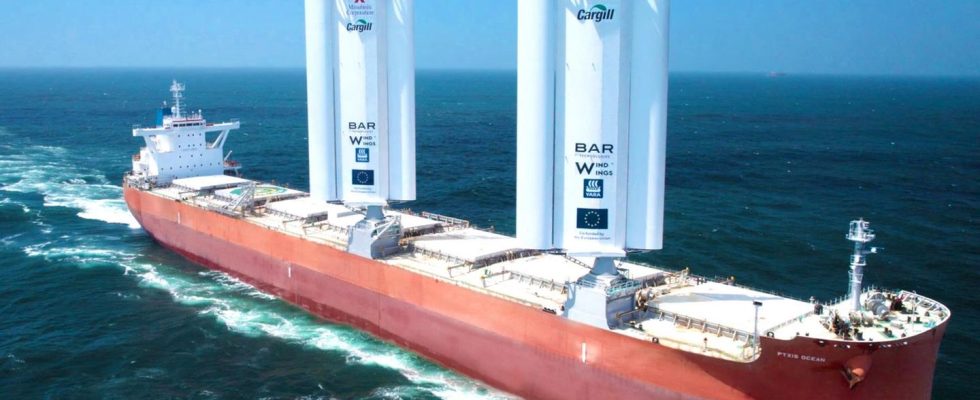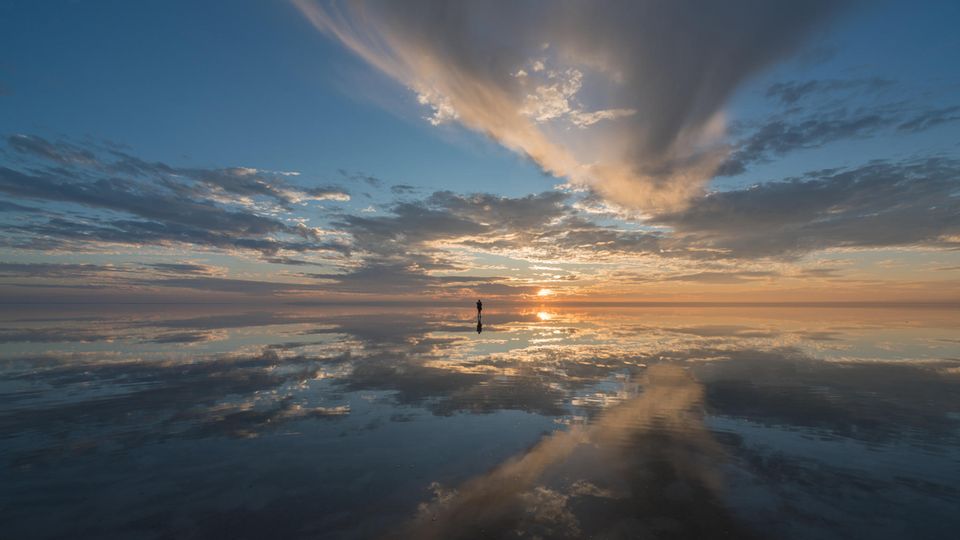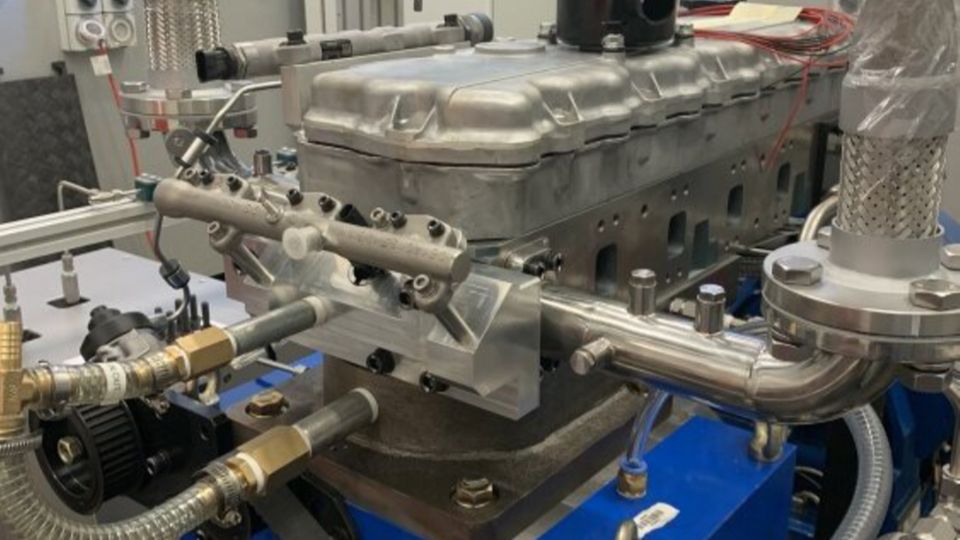Return of the Sailing Ships
“Pyxis Ocean”: The world’s first wind-powered freighter starts its maiden voyage
It is easy to see that the sails were installed later.
© Chargill / PR
The “Pyxis Ocean” is a 230 meter long bulk carrier. In addition to an engine, it has a well-known and yet revolutionary drive: two large sails. They should support the ship’s engine and save a third of the fuel.
The first voyage under “full sail” has begun for “Pyxis Ocean”. A big step for seafaring, because wind power should save a lot of fuel. Although the sails were only designed as an auxiliary drive, the freighter was able to sail with wind power alone during the first sea trials. He reached more than five and a half knots without engine. Now that is located Ship on its first voyage from Singapore to Paranagua in Brazil.
The special thing about the wing-shaped sails, which are more than 37 meters high, is that they can be retrofitted to existing ships. This is what happened with the “Pyxis Ocean”. The two sails should save three tons of fuel per day, which is 30 percent of consumption.
Retrofit capability is a key issue. If you want to achieve rapid environmental change, you need to involve existing ships and not just new builds.
Great savings potential
“I’m very happy about it,” said Jan Dieleman, President of the Cargill shipping company, about the first trip. “We’ve finally gotten to the point where this ship is on the water.”
The development was not easy. Cargill initially experimented with large wind kites, but did not make any headway. These sails are based on the design used in the Americas Cup. But sails also bring special challenges. They block the view from the bridge, in harbors and in heavy seas they have to be hauled in or folded away.
The sails can therefore be placed differently in the wind. In strong winds, the power is throttled. Above 40 knots – i.e. at gale force – the wings are folded completely onto the deck.
testing in practice
“We need to find out if everything is going to work. Is it safe? Can the wings move like they’re supposed to, can they fold? Does that actually work in port and then do we get the fuel savings?
It’s a huge project. That’s never happened before,” Dieleman said. “But you have to be willing to take risks, otherwise it’s all just a theoretical exercise, so it’s time to show what’s possible.”
This technique would also change shipping routes in favor of the old trade routes. Not only the route counts, but also the wind conditions. “If you can save fuel, you basically save CO2. That’s a very simple calculation,” says Dieleman.





